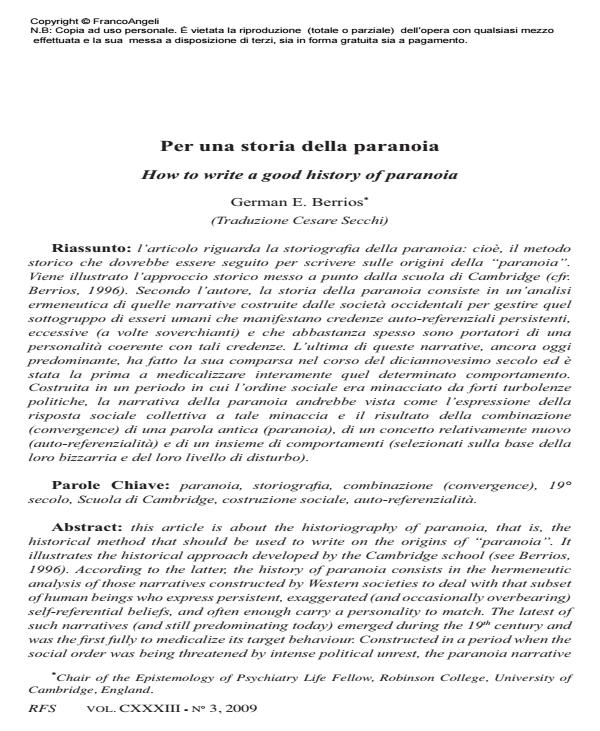Per una storia della paranoia
Journal title RIVISTA SPERIMENTALE DI FRENIATRIA
Author/s German E. Berrios
Publishing Year 2009 Issue 2009/3
Language Italian Pages 32 P. 109-141 File size 371 KB
DOI 10.3280/RSF2009003004
DOI is like a bar code for intellectual property: to have more infomation
click here
Below, you can see the article first page
If you want to buy this article in PDF format, you can do it, following the instructions to buy download credits

FrancoAngeli is member of Publishers International Linking Association, Inc (PILA), a not-for-profit association which run the CrossRef service enabling links to and from online scholarly content.
Per una storia della paranoia - This article is about the historiography of paranoia, that is, the historical method that should be used to write on the origins of "paranoia". It illustrates the historical approach developed by the Cambridge school (see Berrios, 1996). According to the latter, the history of paranoia consists in the hermeneutic analysis of those narratives constructed by Western societies to deal with that subset of human beings who express persistent, exaggerated (and occasionally overbearing) self-referential beliefs, and often enough carry a personality to match. The latest of such narratives (and still predominating today) emerged during the 19th century and was the first fully to medicalize its target behaviour. Constructed in a period when the social order was being threatened by intense political unrest, the paranoia narrative should best be seen as the expression of a collective social response to such threat resulting from the convergence of an ancient word (paranoia), a relatively new concept (self-referentiality) and a set of behaviours (selected in terms of their oddity and nuisance value).
Keywords: Paranoia, historiography, convergence, 19th century, Cambridge school, social construction, self-referential
German E. Berrios, Per una storia della paranoia in "RIVISTA SPERIMENTALE DI FRENIATRIA" 3/2009, pp 109-141, DOI: 10.3280/RSF2009003004